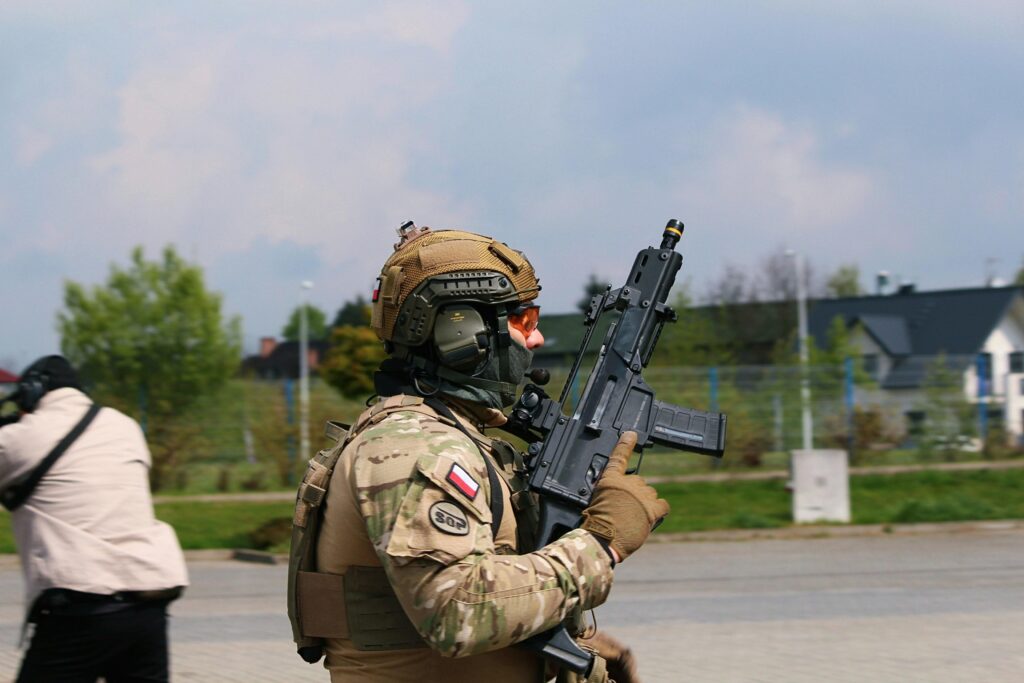The evolution of smart bomb technology represents a pivotal advancement in modern precision-guided munitions, significantly enhancing the accuracy, lethality, and strategic utility of aerial ordnance. Leveraging cutting-edge developments in guidance systems, sensor integration, and real-time data processing, contemporary smart bombs have transcended traditional limitations, enabling forces to achieve higher mission success rates while minimizing collateral damage. This article provides a comprehensive examination of recent technological breakthroughs in smart bomb design, encompassing advancements in inertial navigation, laser and GPS targeting, autonomous target recognition, and adaptive flight control. Furthermore, it explores the expanding spectrum of applications across diverse operational theaters, highlighting the implications for tactical warfare, strategic deterrence, and future combat scenarios.
Table of Contents
- Emerging Precision Guidance Systems and Their Impact on Target Accuracy
- Material Innovations Enhancing Explosive Efficiency and Safety Protocols
- Integration of Artificial Intelligence for Autonomous Target Recognition
- Strategic Recommendations for Ethical Deployment and Compliance Standards
- To Wrap It Up
Emerging Precision Guidance Systems and Their Impact on Target Accuracy
The evolution of precision guidance systems has revolutionized the battlefield by significantly enhancing the accuracy of modern munitions. Cutting-edge innovations integrate advanced sensors, real-time data fusion, and adaptive algorithms to consistently improve target acquisition and strike precision. These systems leverage a combination of satellite navigation (GPS/GLONASS), inertial navigation systems (INS), and laser guidance, resulting in a synergistic effect that minimizes collateral damage and maximizes mission success. The incorporation of Machine Learning (ML) enables these smart bombs to adjust trajectories dynamically, compensating for environmental variables such as wind, weather, and moving targets, thus outperforming legacy systems in both complexity and reliability.
Key technical features contributing to this leap in accuracy include:
- Multi-sensor integration: Combining infrared, radar, and electro-optical sensors for enhanced target recognition under diverse conditions.
- Real-time target updates: Utilizing secure data links to receive live intel and adjust targeting parameters even after release.
- Autonomous target discrimination: Leveraging AI to differentiate between legitimate threats and civilian objects, reducing the risk of misidentification.
- Miniaturized actuator technology: Enabling finer control over bomb fins and flight surfaces for precise maneuvering.
These advancements not only improve the lethality of smart bombs but also support operational doctrines that prioritize minimizing unintended damage, underscoring a paradigm shift toward surgical strike capabilities in modern warfare.
Material Innovations Enhancing Explosive Efficiency and Safety Protocols
Recent breakthroughs in composite materials and nanotechnology have significantly transformed the landscape of explosive formulations. The integration of graphene-based additives and microporous energetic crystals enhances detonation velocity and stability, enabling controlled energy release with unparalleled precision. These materials not only increase the explosive efficiency by improving density and thermal conductivity but also reduce sensitivity to accidental stimuli. Such advancements facilitate safer handling and storage, critical in both military and commercial applications, where minimizing unintended detonations is paramount.
Alongside formulation improvements, innovative encapsulation techniques employ smart polymer matrices and bio-inspired shock-absorbing layers that serve as protective barriers against mechanical impact and environmental degradation. These layers can dynamically adjust to external stresses, activating safety protocols to isolate the explosive core when triggered by abnormal conditions. Key enhancements include:
- Real-time sensing capabilities integrated within composite shells
- Adaptive response systems for temperature and pressure fluctuations
- Self-healing polymer coatings to prevent microfractures
These multifunctional materials enable the next generation of munitions to be not only more efficient in their energy output but also significantly safer throughout the lifecycle of deployment and storage.
Integration of Artificial Intelligence for Autonomous Target Recognition
Recent innovations in smart bomb technology have leveraged advanced algorithms and deep learning to achieve unprecedented levels of target acquisition precision. These systems utilize convolutional neural networks (CNNs) to analyze real-time sensor data, enabling autonomous recognition and classification of diverse targets in complex combat environments. By integrating multi-spectral imaging and radar data fusion, the AI-driven modules can discern subtle differences in target signatures, thereby minimizing collateral damage and enhancing strike accuracy. This autonomous capability dramatically reduces the reliance on remote human operators and accelerates decision-making processes in dynamic scenarios.
Key features of this AI integration include:
- Adaptive learning: Continuous in-mission refinement of target profiles based on environmental feedback.
- Robust threat discrimination: Differentiating between hostile and non-hostile objects with high confidence.
- Low-latency processing: Ensuring real-time responsiveness for immediate target engagement decisions.
- Fail-safe protocols: Autonomous mission abort or re-targeting in response to identification uncertainties.
Strategic Recommendations for Ethical Deployment and Compliance Standards
To ensure the responsible advancement of smart bomb technology, it is imperative to establish rigorous operational protocols that govern deployment scenarios. These protocols must prioritize minimizing collateral damage and enhancing target discrimination through advanced sensor fusion and machine learning algorithms. Moreover, continuous oversight by interdisciplinary ethics committees can help assess real-time compliance with international humanitarian laws, ensuring that automated decision-making remains within human-controlled boundaries.
Adopting a comprehensive framework of compliance standards is critical, encompassing transparency in algorithmic design, robust accountability mechanisms, and exhaustive testing under diverse combat environments. Key strategic recommendations include:
- Mandatory audit trails: Full documentation of targeting decisions and sensor inputs to facilitate post-mission analysis and legal review.
- International interoperability standards: Alignment of communication protocols and engagement criteria with allied forces to prevent unintended escalations.
- Ethical AI certification: Formal validation of embedded AI systems to uphold principles of proportionality and necessity in kinetic operations.
- Dynamic risk assessment: Integration of adaptive heuristics enabling smart bombs to abort or retarget based on civilian presence or changing tactical contexts.
To Wrap It Up
In summary, the rapid advancements in smart bomb technology have significantly enhanced precision, reliability, and operational versatility in modern warfare. Innovations in guidance systems, sensor integration, and autonomous targeting continue to expand the tactical applications of these munitions while reducing collateral damage. As the technology evolves, ongoing research must prioritize ethical considerations, robust cybersecurity measures, and compliance with international laws to ensure responsible deployment. The future of smart bomb technology will undoubtedly shape strategic military doctrines, necessitating a balanced approach between technological progress and the imperatives of global security.













